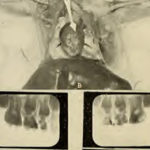Root Canal Myths
. There are many misconceptions surrounding root canal (endodontic) treatment. The Connecticut Association of Endodontists wants you to have accurate information. As always, when considering any medical procedure, you should get as much information as you can about all of your options. Your dentist or endodontist can answer many of your questions, and if you still have concerns, it is often wise to seek a second opinion.
There are many misconceptions surrounding root canal (endodontic) treatment. The Connecticut Association of Endodontists wants you to have accurate information. As always, when considering any medical procedure, you should get as much information as you can about all of your options. Your dentist or endodontist can answer many of your questions, and if you still have concerns, it is often wise to seek a second opinion.
Over the past several years, however, a very small number of dentists and physicians have been claiming that teeth that have received root canal (endodontic) treatment contribute to the occurrence of illness and disease in the body. This claim is based on the outdated research performed by Dr. Weston A. Price from 1910-1930. His research supported the theory of focal infection which stated that bacteria trapped in the teeth during root canal treatment can cause almost any type of disease, including arthritis, heart disease, kidney disease and others. This theory recommended that extraction of teeth rather than saving teeth through root canal treatment, to limit the risk of more general illness. His research, based on case reports and animal studies performed on rabbits, claimed to show dramatic improvements after the extraction of teeth with non-vital pulps.
By the 1930s, the theory of focal infection began to be reexamined, and new research shed doubt on the results of previous studies. A 1935 Journal of the Canadian Dental Association article called Price radical, while citing his comment in Dental Infections, Oral and Systemic of “continually seeing patients suffering more from the inconvenience and difficulties of mastication and nourishment than they did from the lesions from which their physician or dentist had sought to give them relief” as a good reason for the use of tooth extraction to be minimized. One researcher in 1940 noted that practically every investigation dealing with the root canal treated teeth made prior to 1936 is invalid and that the research of Price had technical limitations and questionable interpretations of results.
Myth #1: Root canal treatment is painful.
Truth: Root canal treatment doesn’t cause pain, it relieves it.
The perception of root canals being painful began decades ago but with the latest technologies and anesthetics, root canal treatment today is no more uncomfortable than having a filling placed. In fact, a recent survey showed that patients who have experienced root canal treatment are six times more likely to describe it as “painless” than patients who have not had root canal treatment.
Most patients see their dentist or endodontist when they have severe toothache. The toothache can be caused by damaged pulp tissues in the tooth. Root canal treatment removes this damaged pulp tissue from the tooth, thereby relieving the pain you feel.
Myth #2: Root canal treatment causes illness.
Truth: Root canal treatment is a safe and effective procedure.
Research studies performed in the 1930s and 1940s and those conducted in later years showed no relationship between the presence of endodontically treated teeth and the presence of illness. Instead, researchers found that people with root canal fillings were no more likely to be ill than people without them.
Over the past several years, however, a very small number of dentists and physicians have been claiming that teeth that have received root canal (endodontic) treatment contribute to the occurrence of illness and disease in the body. This claim is based on the outdated research performed by Dr. Weston Price from 1910-1930. His research stated that bacteria trapped in the teeth during root canal treatment can cause almost any type of disease, including arthritis, heart disease, kidney disease and others.
The presence of bacteria in teeth and the mouth has been an accepted fact for many years. But presence of bacteria does not constitute “infection” and is not necessarily a threat to a person's health. Bacteria are present in the mouth and teeth at all times, even in teeth that have never had a cavity or other trauma.
More recent attempts to copy the research of Dr. Price (and to check its accuracy) have been unsuccessful. Researchers now believe that the earlier findings may have been caused by poor sanitation and imprecise research techniques that were common in the early 1900s.
These more recent studies support the truth we report today – that teeth that receive proper endodontic treatment do not cause illness.
Myth #3: A good alternative to root canal treatment is extraction (pulling the tooth).
Truth: Saving your natural teeth, if possible, is the very best option.
Nothing can completely replace your natural tooth. An artificial tooth can sometimes cause you to avoid certain foods. Keeping your own teeth is important so that you can continue to enjoy the wide variety of foods necessary to maintain the proper nutrient balance in your diet.
Endodontic treatment, along with appropriate restoration, is a cost-effective way to treat teeth with damaged pulp and is usually less expensive than extraction and placement of a bridge or an implant.
Endodontic treatment also has a very high success rate. Many root canal-treated teeth last a lifetime.
Placement of a bridge or an implant will require significantly more time in treatment and may result in further procedures to adjacent teeth and supporting tissues. Millions of healthy endodontically treated teeth serve patients all over the world, years and years after treatment. Those healthy teeth are helping patients chew efficiently, maintain the natural appearance of their smiles and enhance their enjoyment of life. Through endodontic treatment, endodontists and dentists worldwide enable patients to keep their natural teeth for a lifetime.
